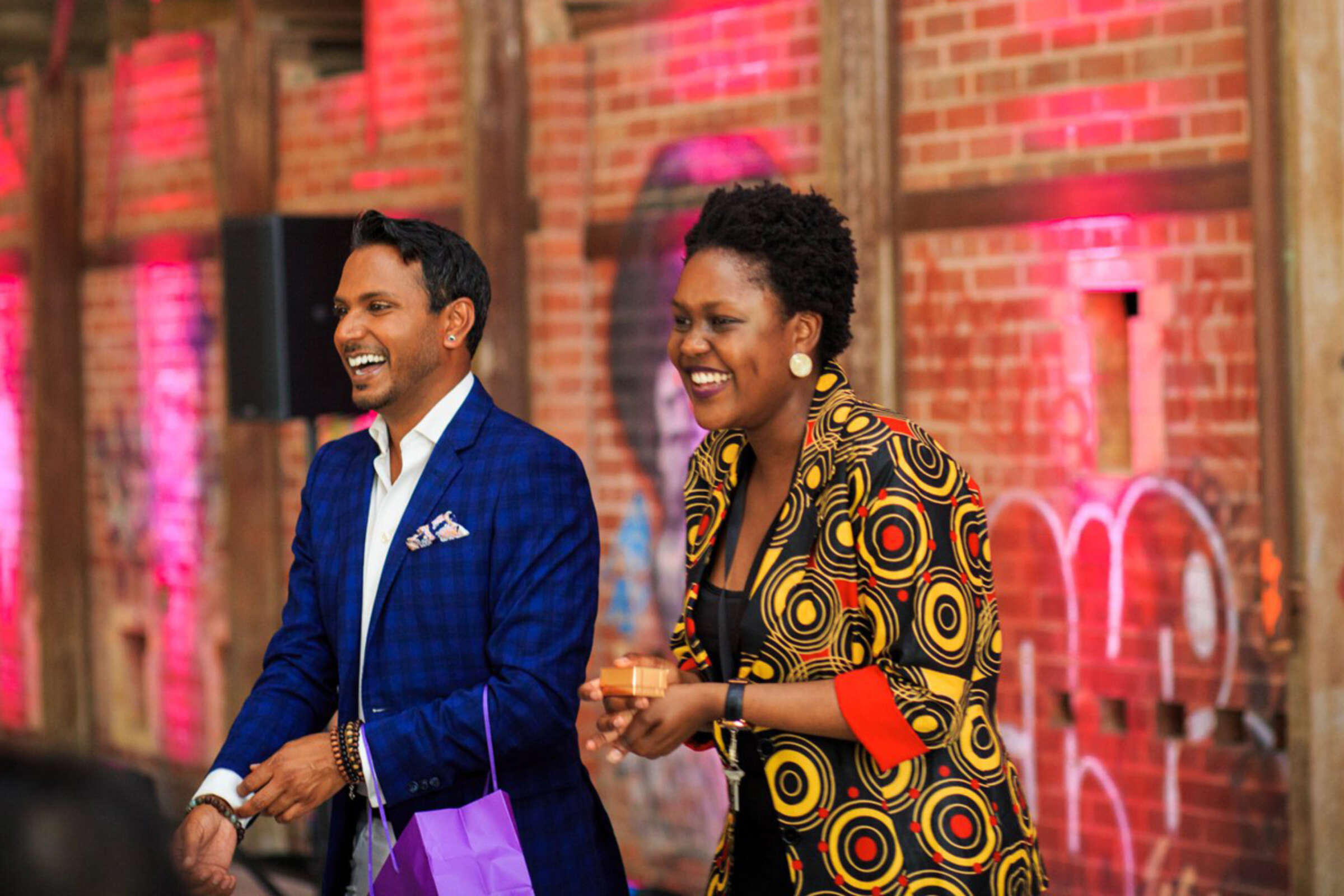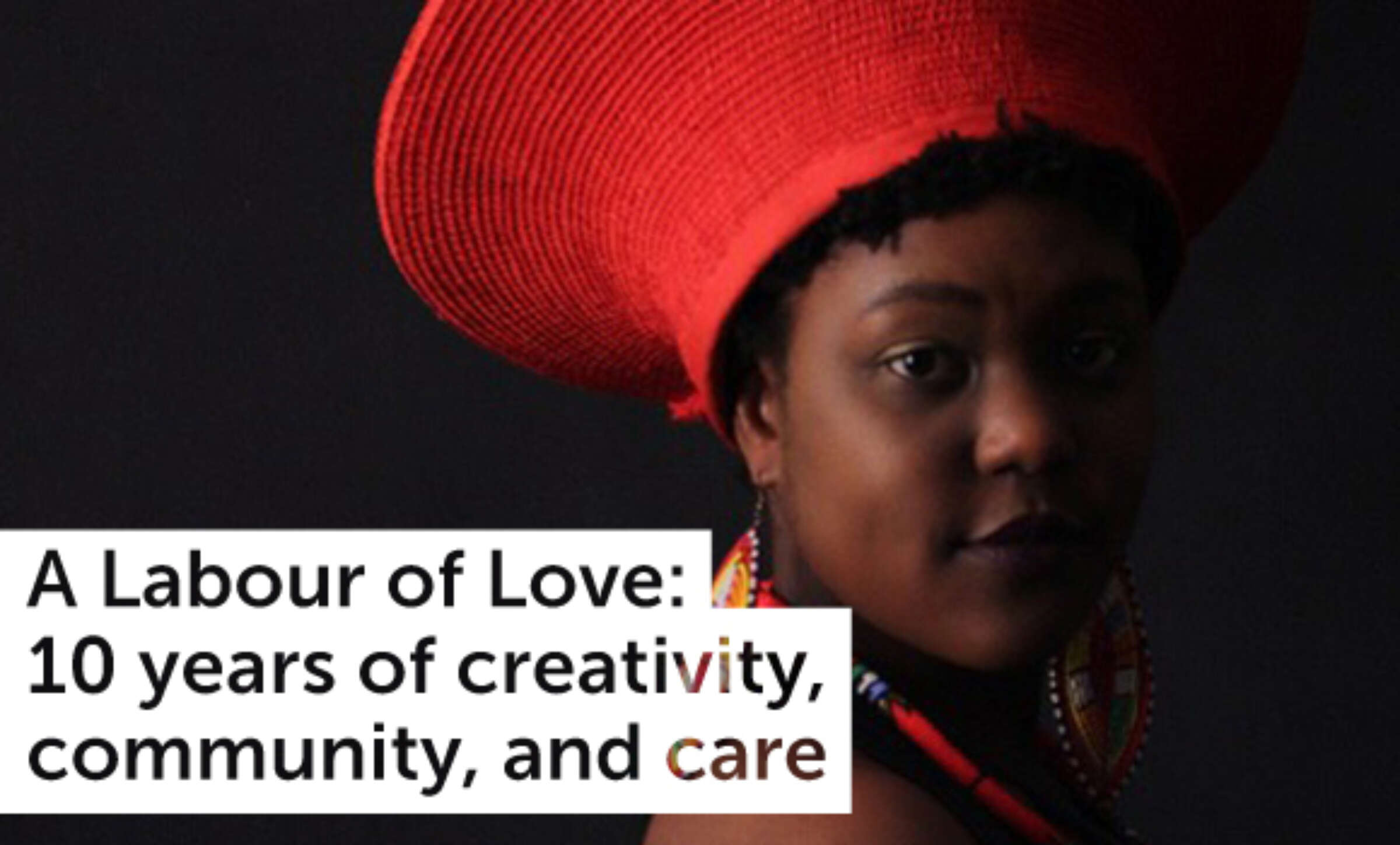[A Labour of Love] Zviko Mhakayakora
December 2018
Welcome to this month’s edition of A Labour of Love: 10 years of creativity, community, and care, our special series of interviews celebrating the past decade of The Public! Each month we're taking a moment to speak with someone we've had the pleasure of working with over the last ten years to reflect on how The Public has impacted them.
In this issue, we speak with Zviko Mhakayakora, OCAD graduate and former student of Sheila’s, who interned at the studio in 2016. Since then, whether as the Special Projects Coordinator for the new Design4 initiative at OCAD University, or coordinating Sheila’s wedding day, we’ve seen her continue to share her talents and wisdom in ever growing ways.
The Public: It was such a pleasure having you work with us at the studio. Can you share a bit about what brought you to us?
Zviko Mhakayakora: Sure! I had Sheila as a professor, and I’m really glad I did, because that really changed my life, because I had a lot of white professors at OCAD who had no idea why I would want to explore my identity in my work. So there was an internal fight: I was trying to figure out who I was [in my identity] and at the same time I was trying to figure out who I was in my practice, and figure out how I want to create, versus how I’m being told to create in order to make money after school.
When I had Sheila as a prof, things changed in that she helped open my mind as to what graphic design could be. A lot of the profs I had before were very traditional in their way of thinking; they thought of graphic design as a prescribed thing and if you didn’t fit within that box, you weren’t a graphic designer. I had some teachers tell me, “you know what, maybe graphic design isn’t for you.”
I first had Sheila as a prof for Research Methods, and then I had her for Open Studio in third year, when we had to prepare for thesis. We spoke a lot and she mentioned the internships at The Public. At this point, I had been really confused, because I was thinking, “I don’t know what I’m doing with my life. Those other profs are saying that I can’t do it, I don’t know if I can do it, I don’t know if I’m enjoying this”. I’d lost the energy to fight the marks they were giving me, and I started to think, “Are they right in telling me that I’m not actually good at this? Maybe they’re right, maybe I should listen to them,” When I spoke with Sheila, I think I told her that I was looking to get more experience with graphic design, and then she mentioned the internship program, and then I applied and got it and it was such an amazing experience coming to work with all of you.
TP: Was there anything you feel like you really took away from your time working at The Public?
ZM: I learned how to do respectful design in a real world setting. In school, when you’re doing projects, you’re doing it, but you never really see how it impacts people, but working at The Public and seeing the different people who’ve worked there, been in contact with, been clients, all of that … they’re all affected positively in different capacities based on the work they did or was done for them.
I mentioned this in passing to someone else, but if I was working in graphic design I would want to work at a place like The Public. Just because of the culture, the work that you do is so meaningful, and there’s a reason behind everything. Like you guys aren’t just like, “We’ll take McDonald’s as a client,” you know what I mean? It’s very thoughtful, very respectful, very accessible and I learned a lot while I was there. There aren’t a lot of companies like The Public. Even just like being at Sheila’s wedding, you could see what type of impact she’s had on people. I found that really cool. Everyone was asking, “How do you know Sheila?” and I was like “Oh, well, Sheila changed my life!” and they were like, “What? She changed my life, too!”.
I also learned to deal with people and having more empathy. Of course there are times when things can be stressful, frustrating, or you might not understand where someone is coming from, but you can take the time to understand where they may be coming from or the fact that they could be going through something, and even though you’re upset, you need to take a step back and chill for a bit and then deal with it.
TP: And do you feel like that’s something you have to do in your role now?
ZM: All the time. I have to work with fifty-five students on a regular basis, with so many different personalities, different things happening in everyone’s lives, even mine. There are things that come up, but I do have to constantly think, “Ok, where are they coming from? Do they have experience in dealing with something like this?” It might come across as not having professionalism, but is it actually, or is it that they just don’t know any better yet?
Also, I really liked having doggos in the office. This is not related, but…
TP: It’s totally related! What did you like about having dogs in the office?
ZM: It was calming. You can take breaks and play with them. That was so great. It’s really funny how when you’re stressed out they can sense it and they know what to do also at the right time. So you’re like “I’m so stressed, I might not finish this!” then they will come jump on you and you’re like “Oh okay, it’s not as serious as I thought, I just need to chill.” I feel like the office culture at The Public was just so perfect, I didn’t realize that I needed that. The way you guys are so welcoming, such good management, and just understanding, great people. Not all office cultures are like that. It wasn’t like, “Oh my gosh, what if I say something and I get fired?” You were approachable, and if anything came up it was easy to talk to you.

TP: Can you tell us more about your work and how its evolved since your time at The Public?
ZM: Sheila also helped me find curation which I didn’t know was a thing before. She encouraged me to apply to the Big Ideas Fund and through that [I got mentorship from] Sheila, Shamina Chherawala and Dr. Andrea Fatona. The three of them helped me figure it all out and curate my first exhibition. Shamina works in the Office for Diversity, Equity, and Sustainability Initiatives, so I learned about things like rights, contracting, and different things on that end, but also how to navigate spaces within OCAD. If it hadn’t been for Sheila encouraging me to apply for this, I don’t think I would have found out about curation when I did or the fact that I enjoy it so much.
A lot of the skills I learned in curation have really helped with event planning and event management, and that’s how I got the role I had previously at Toronto International Festival of Authors, I was a Programming Coordinator there. I was essentially curating authors and their books into panels, talks, and events.
My favourite thing about curation is seeing all the people come together to experience whatever it is that I’ve been working on. So if it’s an exhibition, it’s really great to see people in the space and people experience the work and tell me how it’s affected them. I really like getting feedback about how people feel when they’re either in the space, or how they’re experiencing the work. It’s interesting, because it raises points that I may not have thought about. It’s like we’re co-creating.
Right now, I’m the Special Projects Coordinator for a new initiative called Design4 run through the Centre for Emerging Artists and Designers (CEAD) at OCAD. There are over fifty students working in small interdisciplinary groups of three to four, and they get to work with an employment partner for six months. The students, or Design Apprentices, are at both the undergraduate and master’s levels, something that I don’t think has been done at this large a scale at OCAD U. They get to work for about twenty-one weeks, get some real world experience and apply the skill sets that they’re learning in school.
It’s definitely been a learning opportunity for me. Working closely with the Director and various colleagues in the CEAD, we put the teams together, so it’s interesting to see how their different personalities are working together. It’s also really great to see the Design Apprentices not only learning from the Faculty Mentors or Employment Partners, but also from each other. Different scenarios are coming up and it’s interesting to see how the Design Apprentices are finding solutions to them.
A lesson I always tell the apprentices is not to burn any bridges and to always put their best foot forward. The world is small and very interconnected. When I first moved to Toronto over six years ago, I was having trouble finding a job and I got help from the CEAD office from the person who is now my boss. I am very grateful for the opportunity to be back at OCAD U making a difference in the capacity that I am.
TP: Thank you for taking the time to catch up with us, Zviko!
Date

How do you want to change the world and how can we help?
Let’s Connect